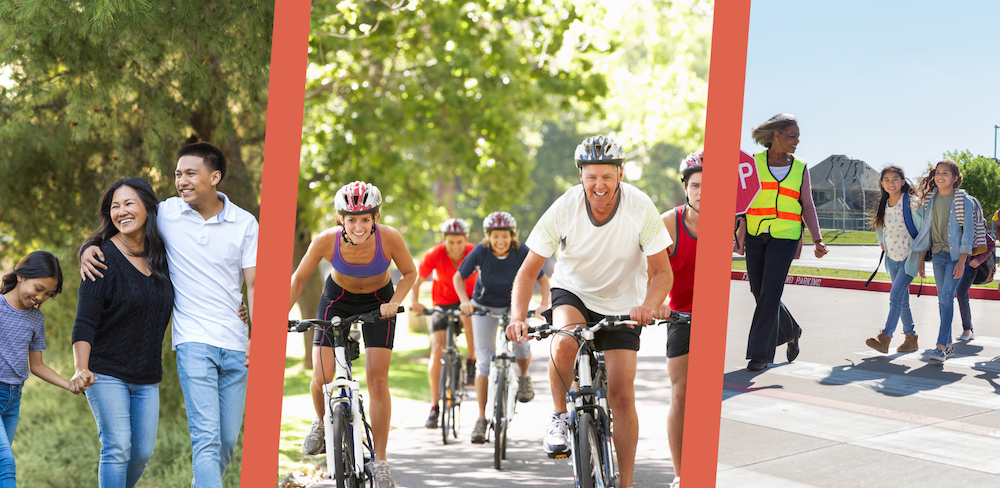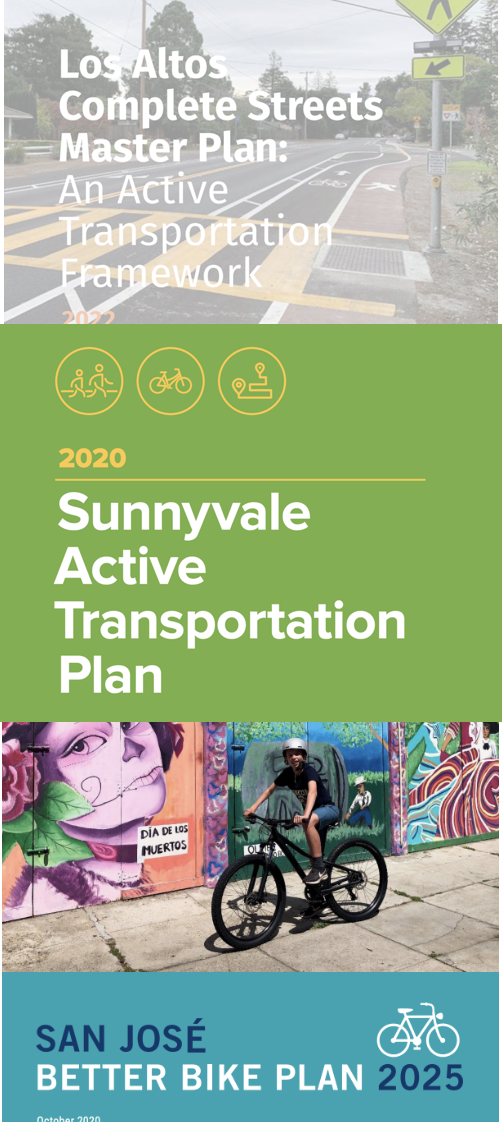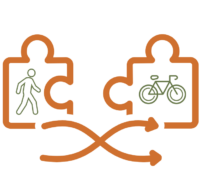Many cities locally have created Active Transportation Plans, which are combined Bicycle and Pedestrian Plans. These allow infrastructure projects which benefit both cyclists and pedestrians to be ranked together, instead of having competing priorities. Some also include information from Safe Routes to School, or even go a bit further by being a plan for all transportation (i.e. a Complete Streets Plan, which includes car traffic). Complete Streets Plans can work well, but also sometimes can be car-centric.

Cupertino currently has a Bicycle Transportation Plan which is now seven years old and a Pedestrian Plan which is a bit newer at five years old. An update is overdue. A new plan would include information from other Master Plans such as the Parks and Rec Master Plan and Climate Action Plan; include new transportation patterns post-Covid; and allow the city to qualify for all grant funding as an updated plan is required for some funding sources.

The good news is a new Active Transportation Plan process is still set to be in the City Workplan for Fiscal Year 2024-25.
This is not guaranteed, however, as council priorities can change from year to year. Plus, as usually these plans take one to two years to develop, the current Bike Plan will be 10 years old before a replacement is done. This means it’s even more critical to get it right.
How other cities are looking forward
San Jose in 2020 passed their comprehensive Better Bike Plan 2025, which is a five-year action plan of prioritized projects to implement a 550 mile network of bike lanes and trails–of which already over 400 miles have already been built. Their focus has been on quick builds, using easily installable plastic bollards to create protected bike lanes, and using grant funding to pay for improvements.
Sunnyvale also in 2020 created their Active Transportation Plan, which combines a Bike, Pedestrian, and Safe Routes to School Plans into one comprehensive plan to meet the needs of all ages of residents. Los Altos City Council passed a Complete Streets Plan in 2022, which, “establishes a community-supported long term vision for improving walking and bicycling in Los Altos.”
What we should look for in a new plan
 A plan that includes ongoing and automatic evaluation and implementation
A plan that includes ongoing and automatic evaluation and implementation
San Jose’s Better Bike Plan 2025 includes a feature that should be included in any future Active Transportation Plan. It includes a provision so that whenever a street is re-paved, the street is evaluated to determine if better bike infrastructure can be added with this new “blank canvas”. Painted bike lanes and infrastructure are added wheverever possible. These changes are automatically coordinated through San Jose’s Annual Pavement Program, similar to Cupertino’s Pavement Management Program.
 A plan that is updated every five years
A plan that is updated every five years
Grant funding from state sources covers an enormous amount of the costs of building better biking and walking infrastructure. It’s critical that cities meet the criteria to obtain this funding. Several grants require an up-to-date Bike, Active Transportation, or Complete Streets Plan to qualify for funding. Updating the plans every five years allows the city to not only be flexible in its response to changing conditions, but makes sure that the maximum amount of grant funding is available as well.
 Regular reviews and non-infrastructure plans to encourage biking and walking
Regular reviews and non-infrastructure plans to encourage biking and walking
Los Altos’ new Complete Streets plan includes existing and proposed non-infrastructure programs to encourage more people to walk and bicycle and educate them on how to do it safely. Also important are metrics and regular evalution of whether the city is meeting its goals for increasing walking and biking.
 A combined project ranking for both bike and ped projects
A combined project ranking for both bike and ped projects
Even though Cupertino’s Bicycle Plan is older by two years than the Pedestrian Plan, we should not just replace it with another Bike Plan. There is a lot of overlap in project use for cyclists and walkers, such as Class I Trails–used by both–and Bicycle Boulevards, which mainly help pedestrians with better crossings. This makes it difficult to determine what projects should have higher priority, when the City Council needs to make a decision. The new plan should prioritize projects for all users into one single list.
 A plan that prioritizes efficient and cost-effective solutions
A plan that prioritizes efficient and cost-effective solutions
There are ways to significantly improve biking and walking infrastructure without breaking the bank. Class IV lanes or safer intersections can be created with plastic bollards. Car parking can be shifted to towards the lane, with bike lanes on the inside of the curb. These solutions and more are inexpensive and usually quick to implement, yet make a real difference for cyclist and pedestrian safety. These types of projects need to be prioritized to maximize the biking and walking network in Cupertino as quickly as possible.
Cupertino made some great strides in improving its biking and walking infrastructure since 2015. A new plan will restart that momentum that has slowed.
The information in this article is solely the opinion of the author and Walk-Bike Cupertino and does not reflect the opinions of any other organization or entity. For more information, contact WBC at info@walkbikecupertino.org.
